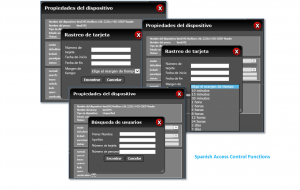Below is an excerpt from Product Lifecycle Report’s interview with Vidsys CEO & Founder James Chong about Vidsys’ work at the 2017 Super Bowl.
Last month’s Super Bowl went far beyond the championship football game to include a series of events, including a nine-day fan festival anchored in Discovery Green, a 12-acre park in the heart of downtown Houston. With a high profile and more than a million spectators, the event created an obvious target for attack. Authorities responsible for protecting the Super Bowl festivities knew the importance of coordinating the vast public safety presence at the event to provide the fastest and most informed response to any terrorist or criminal threat or activity.
The authorities had the benefit of being able to draw from a wide range of data feeds, including surveillance video, audio sensors, traffic sensors, alarms, and phoned-in reports. In the period leading up to the game, Houston’s Office of Public Safety and Homeland Security selected dome network cameras, thermal network cameras, and audio sensors to monitor key areas of the Discovery Green, such as entrances, stages and entertainment areas. The dome network cameras provided long-range, high definition recording capabilities with autofocus. The motion-sensing thermal cameras provided the ability to track nighttime intruders. The audio sensors detected aggressive sounds.
But manpower limitations made it impossible for public safety personnel to adequately monitor the huge amounts of data generated by these sensors. The people responsible for viewing the feeds and making decisions would have been overwhelmed by the huge volumes of data to the point that they could have easily missed danger signs until long after they first appeared. Even after they were notified of an event is occurring, it would have taken considerable time to identify the most relevant information sources and formulate a response.
The City of Houston used the Vidsys software platform to integrate the wide range of sensors and devices together with analytics onto an integrated command center display. The IoT-based technology collected information from the data feeds and used rules to present decision-makers with the most relevant data. Workflow and collaboration tools helped ensure that the data was used as effectively as possible to neutralize any threat….
Read the full article on Product Lifecycle Report here.




